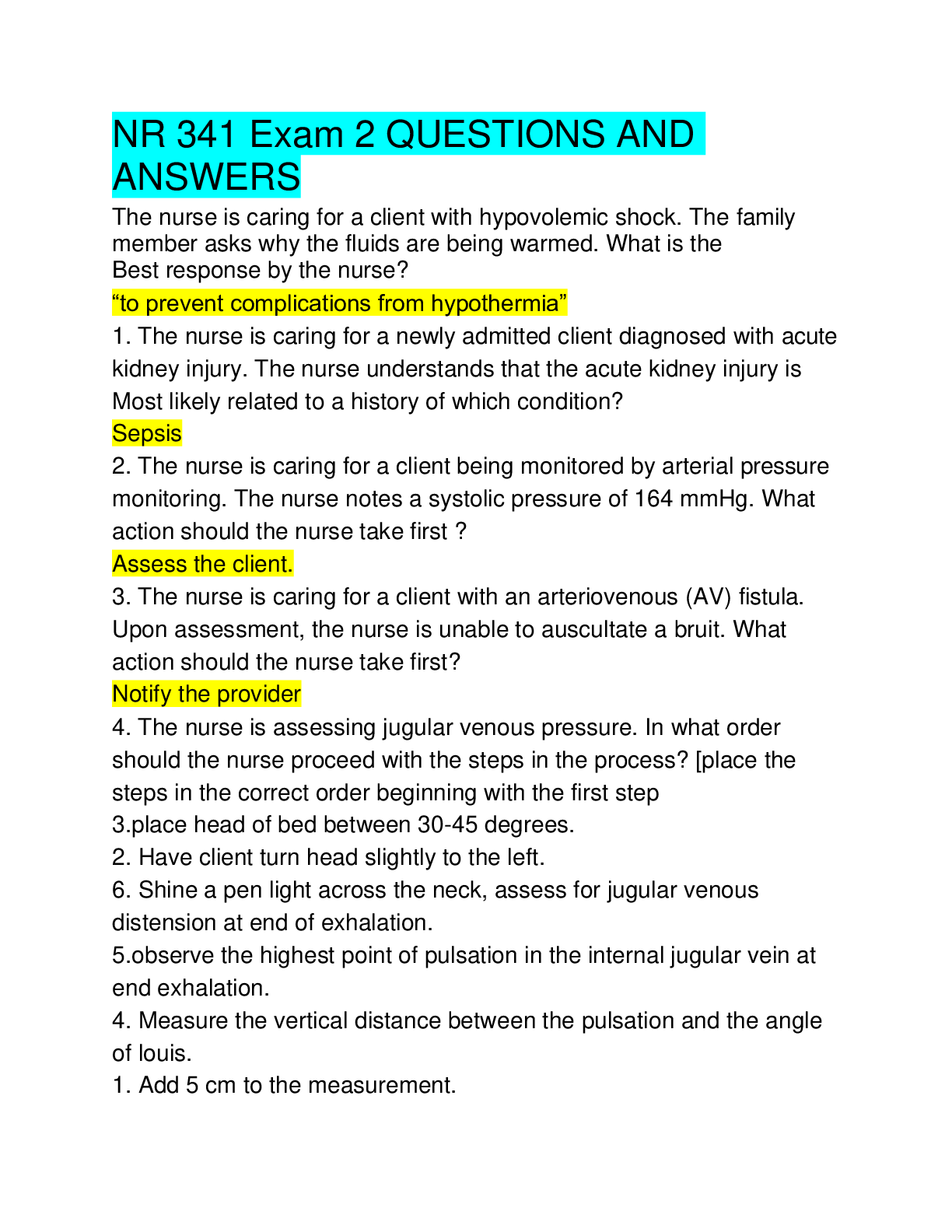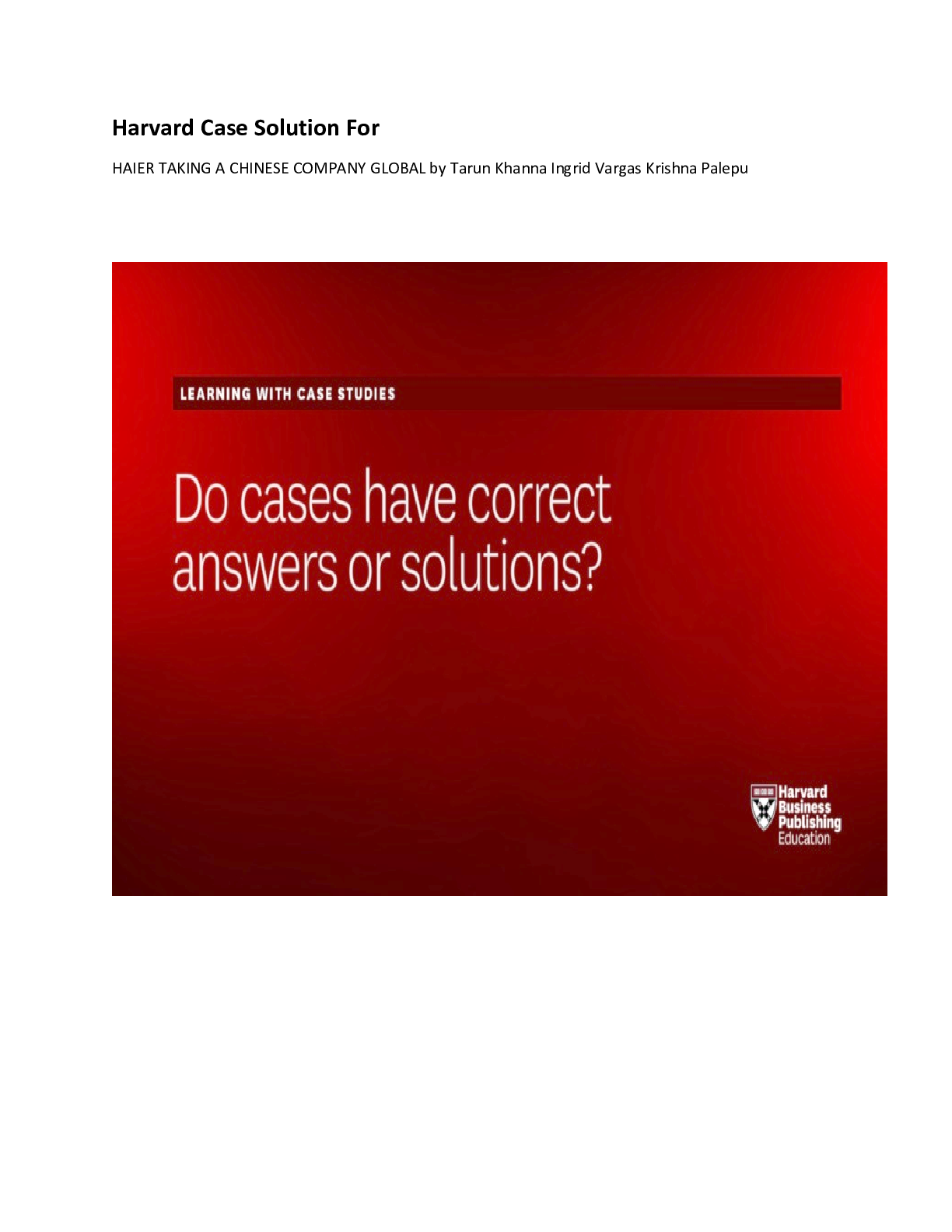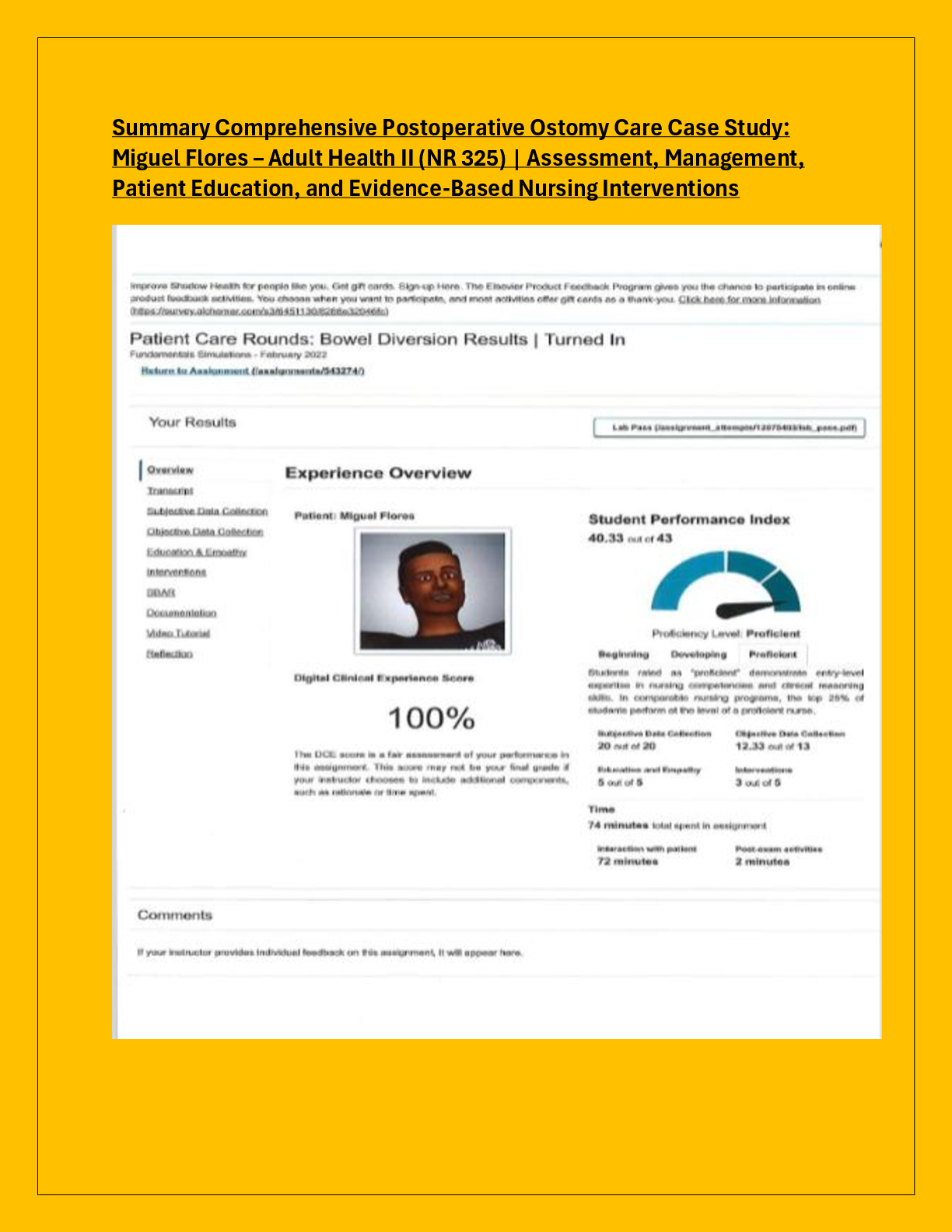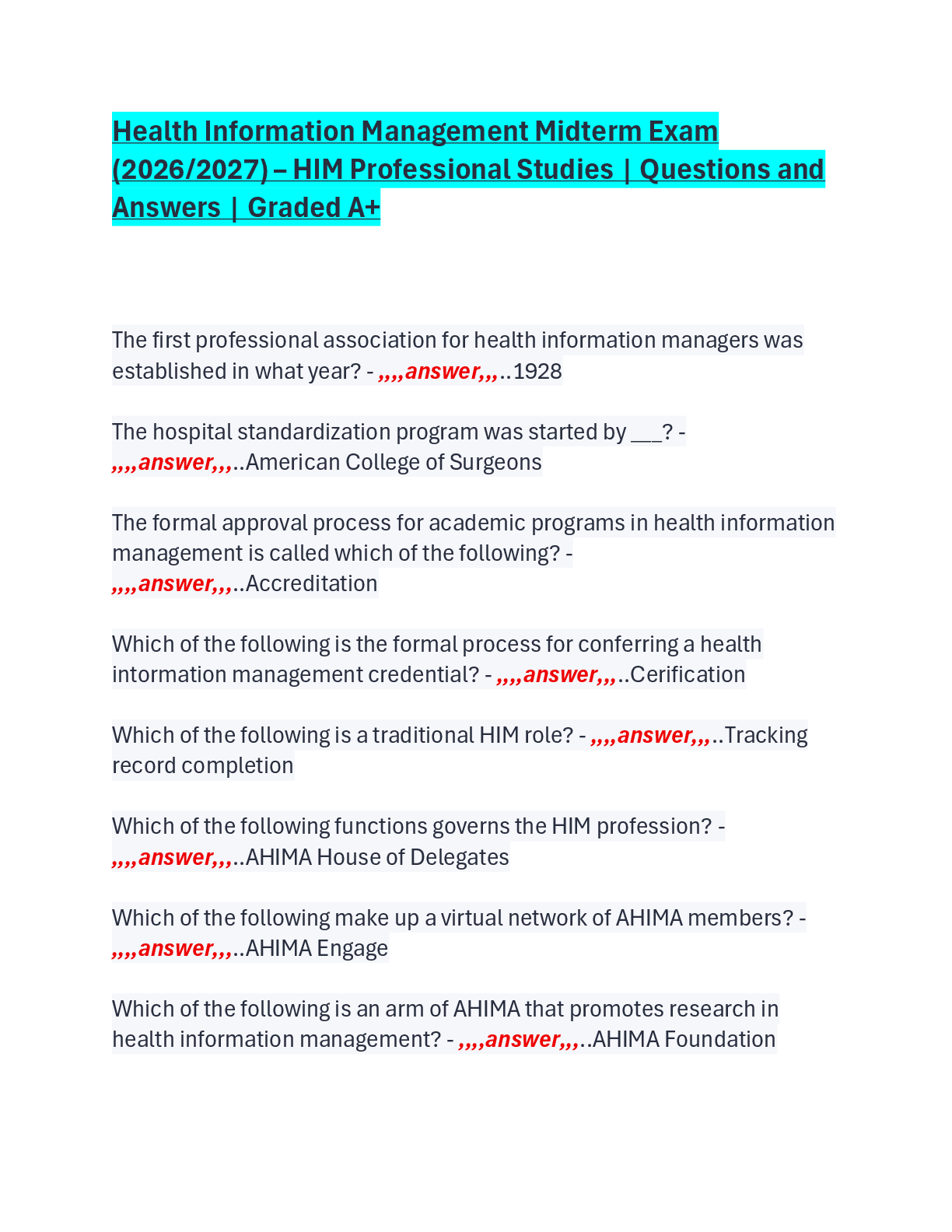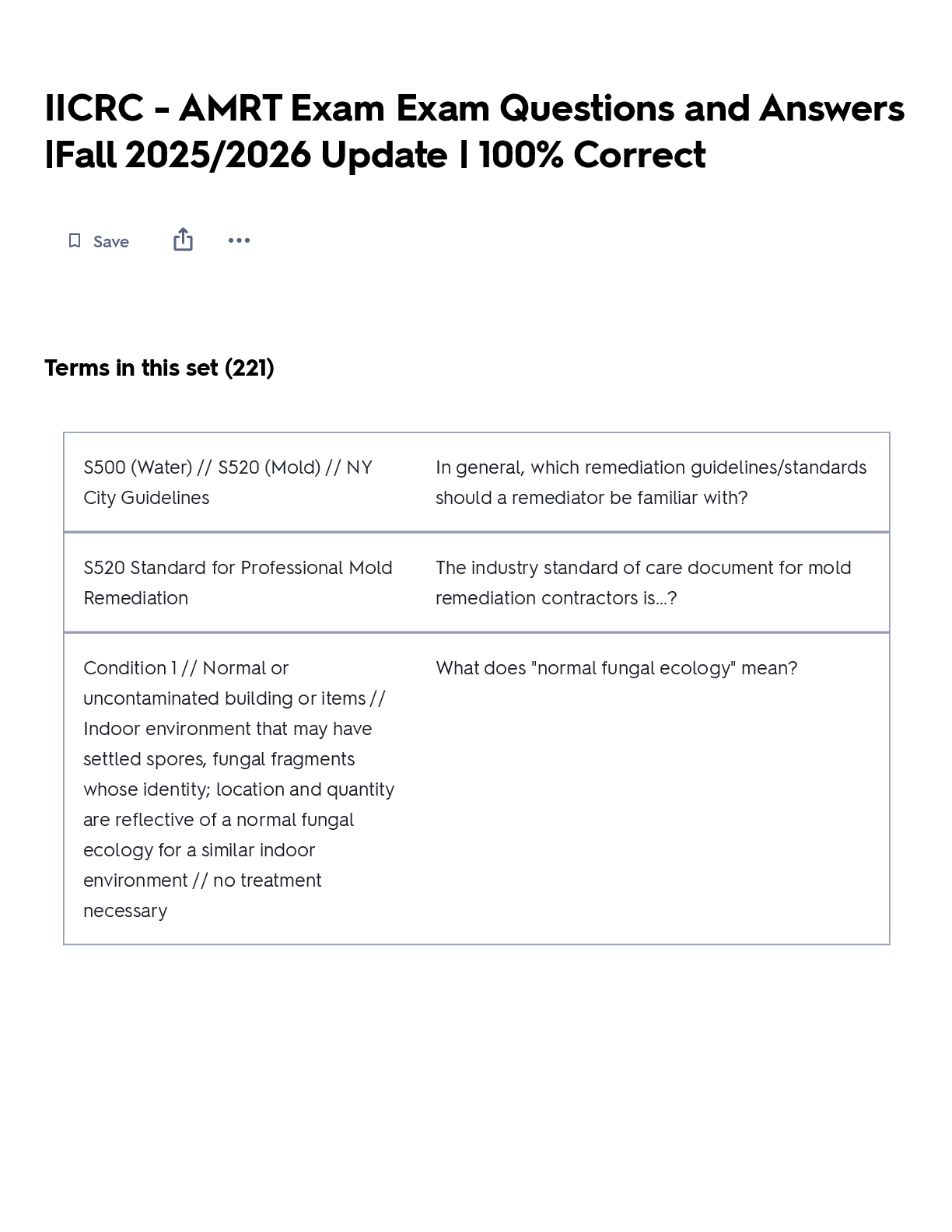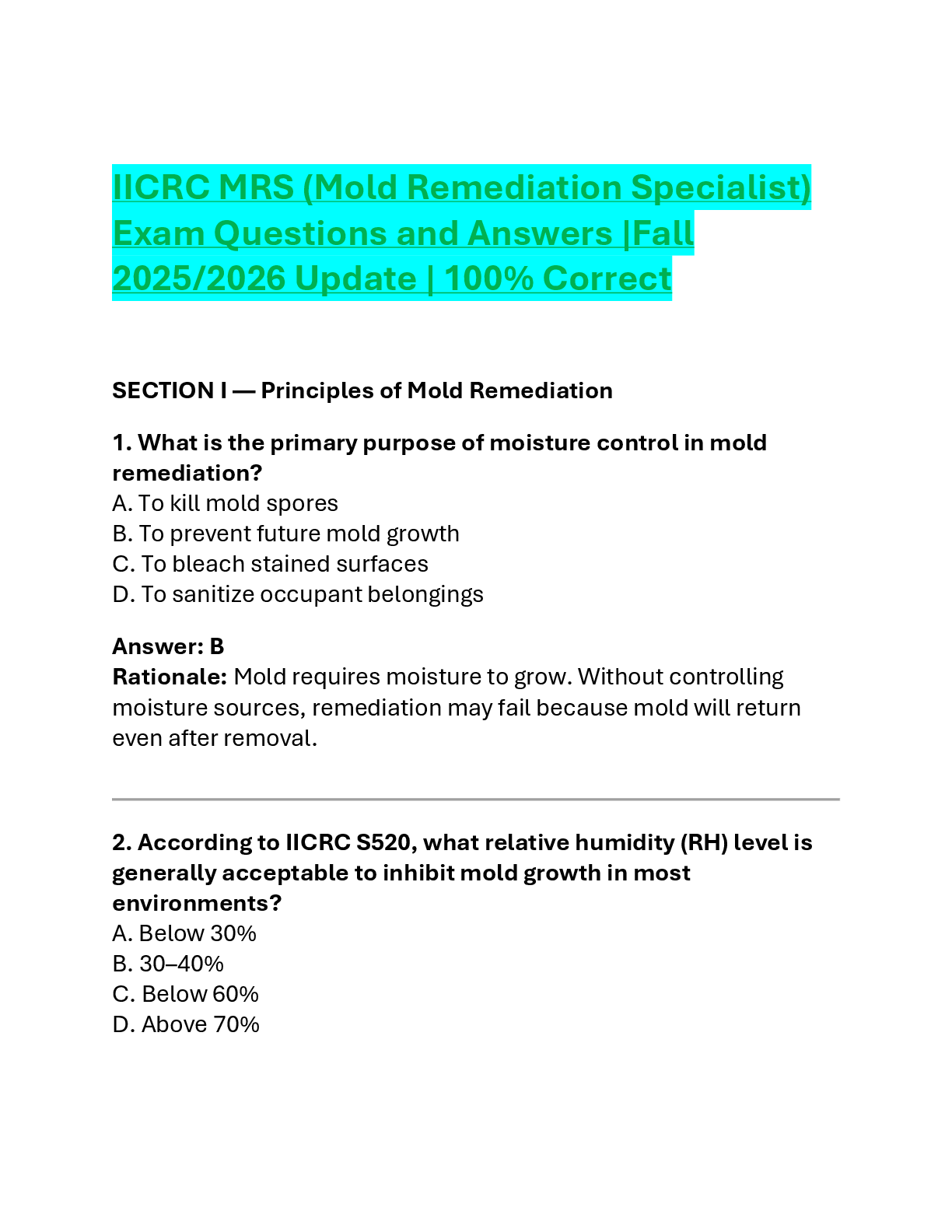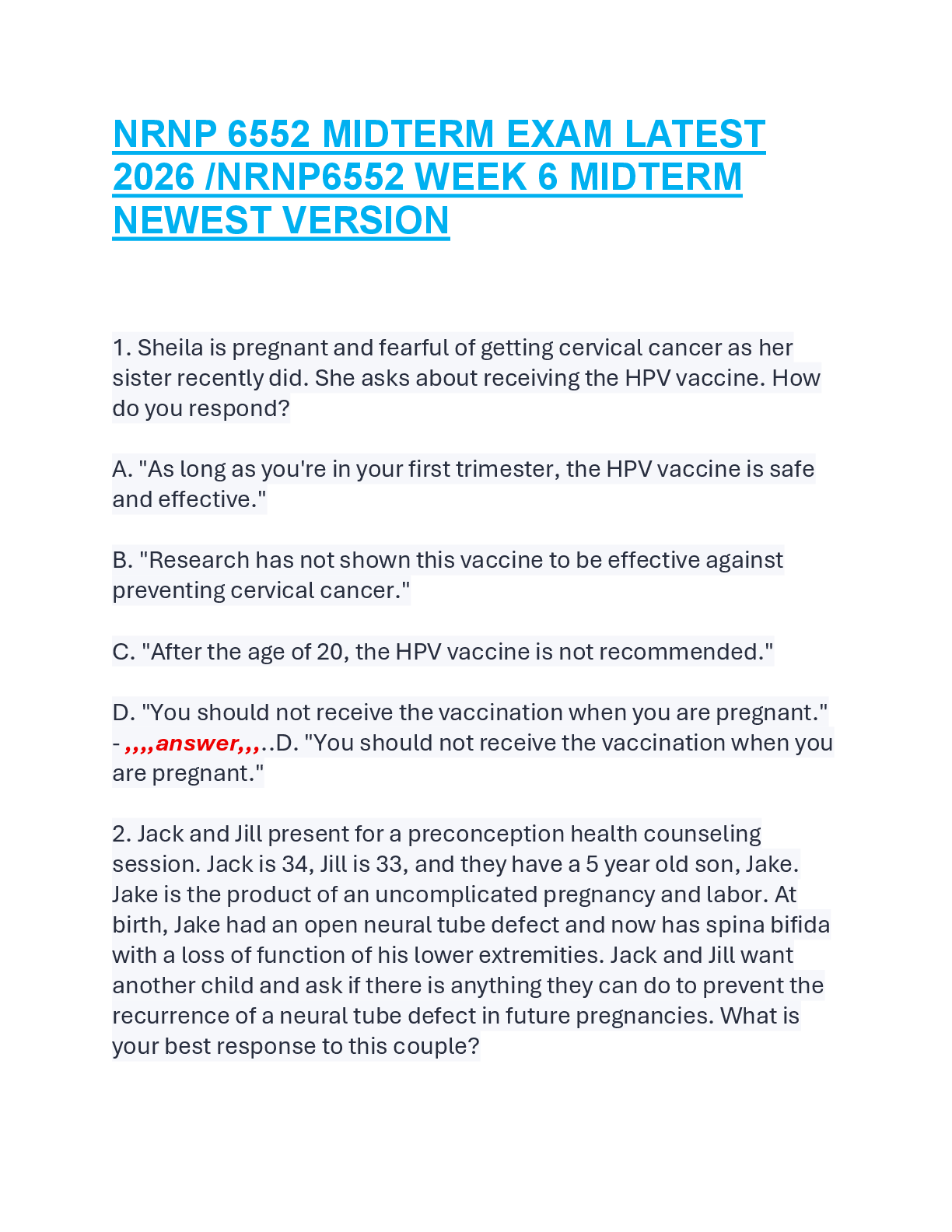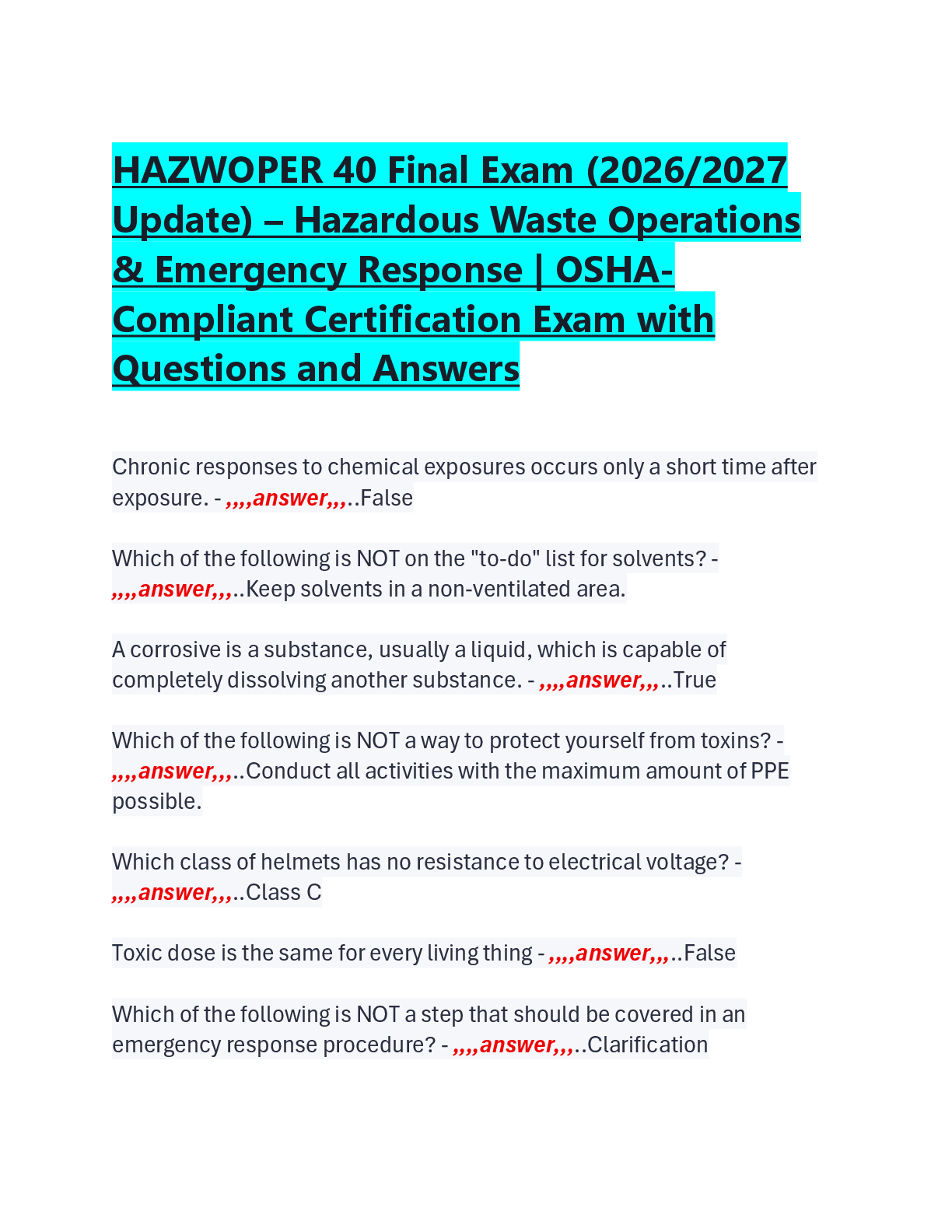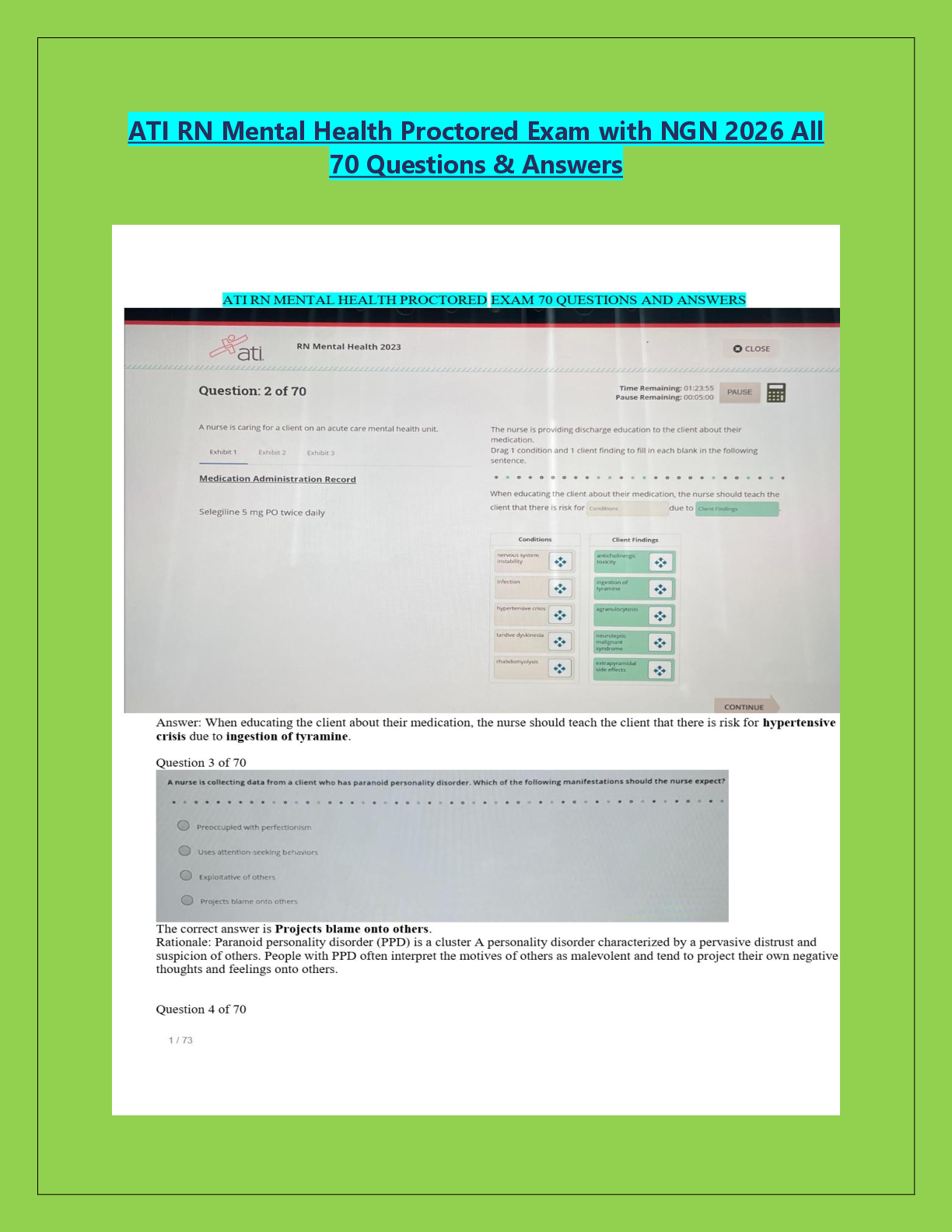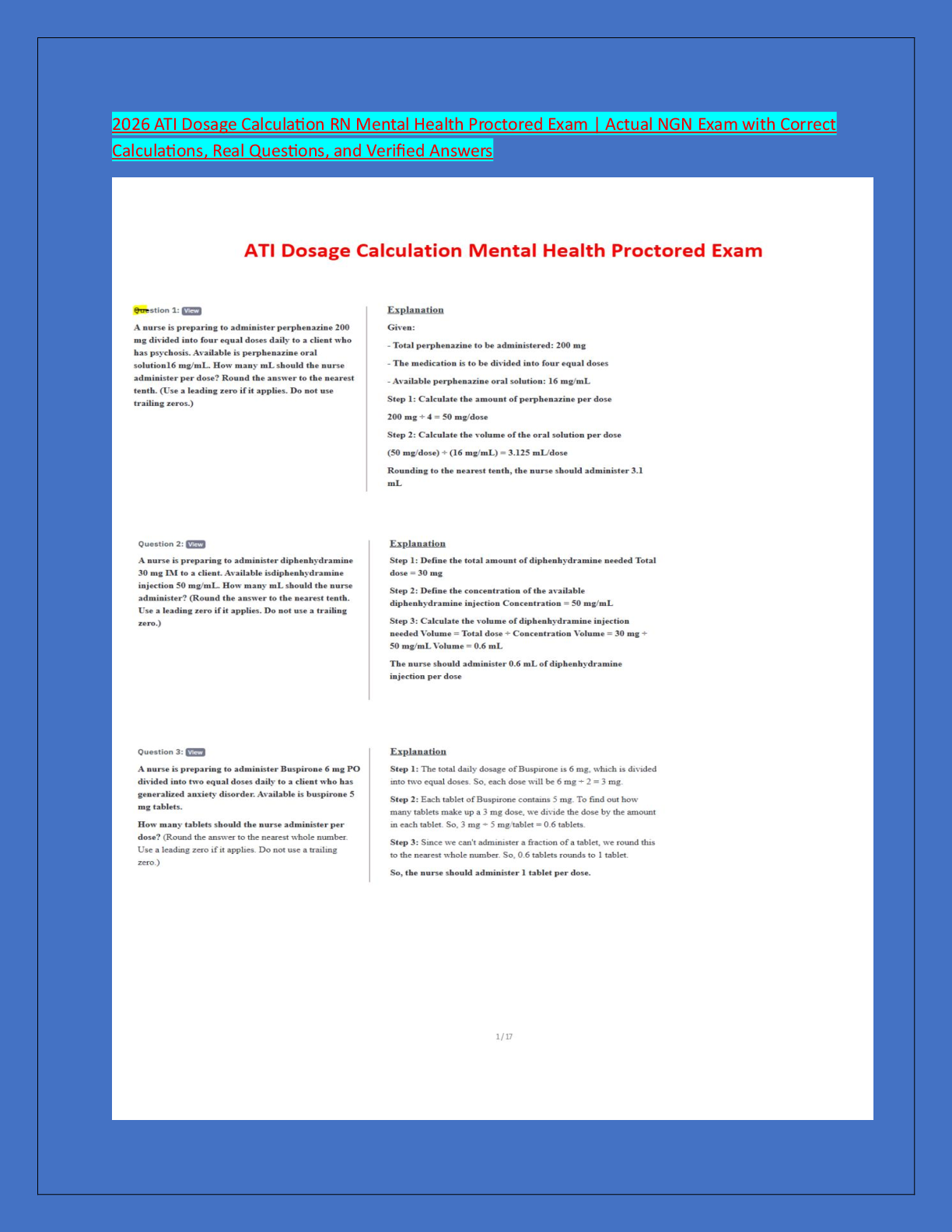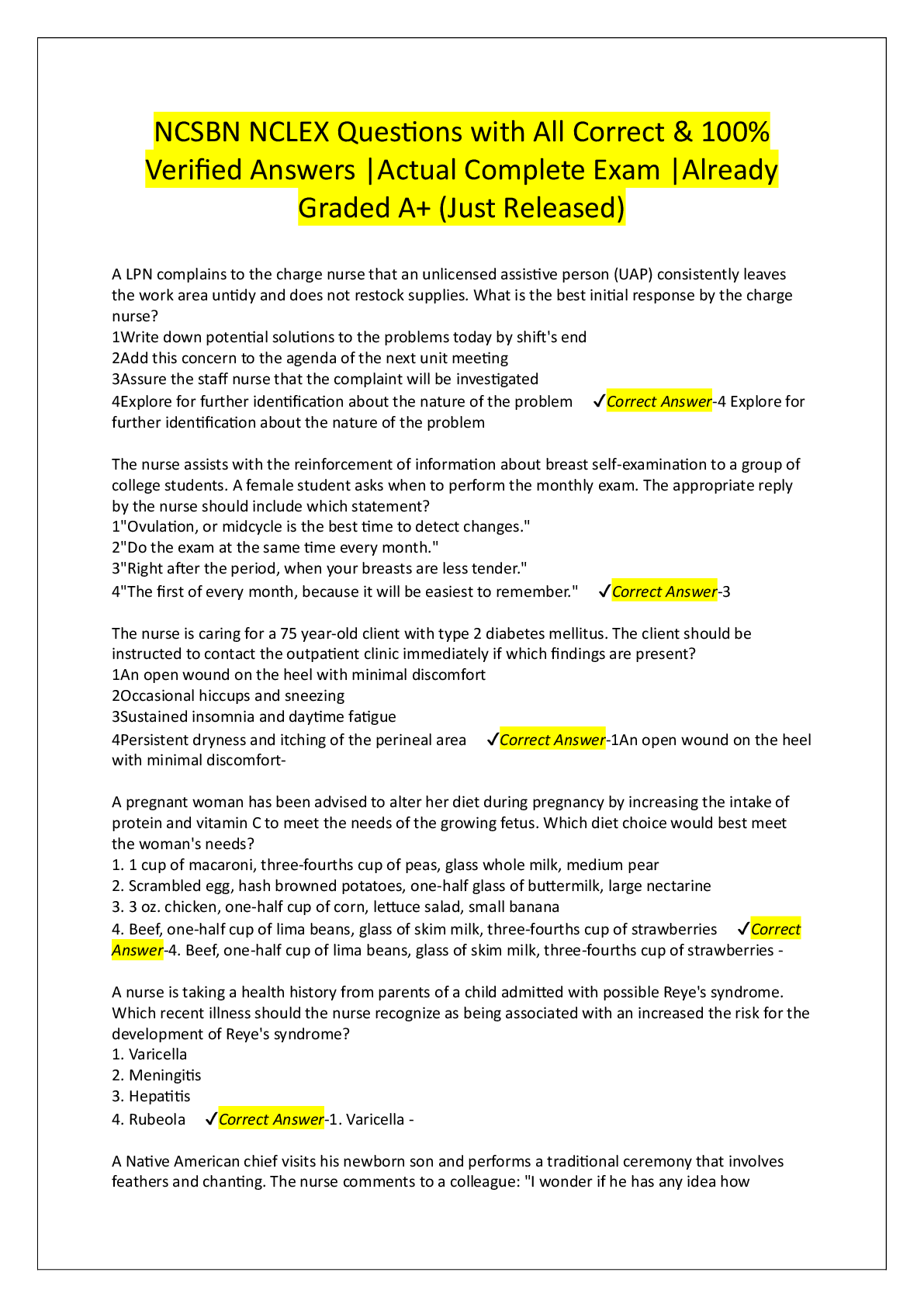NURSING 6005 CHAPTER 51: DRUGS FOR ANGINA PECTORIS
Document Content and Description Below
NURSING 6005 CHAPTER 51: DRUGS FOR ANGINA PECTORIS Test Bank MULTIPLE CHOICE 1. A nurse is providing teaching for a patient with stable angina who will begin taking nitroglycerin. Which statem ... ent by the patient indicates understanding of the teaching? a. “I should not participate in aerobic exercise while taking this drug.” b. “I should take aspirin daily to reduce my need for nitroglycerin.” c. “If I take nitroglycerin before exertion, I can reduce the chance of an anginal attack.” d. “I take nitroglycerin to increase the amount of oxygen to my heart.” 2. A nurse is discussing the difference between stable and variant angina with a group of nursing students. Which statement by a student indicates the need for further teaching? a. “Beta blockers are effective in stable angina but not in variant angina.” b. “In both types of angina, prophylactic treatment is possible.” c. “Variant angina is primarily treated with vasodilators to increase oxygen supply.” d. “Variant angina is the result of increased oxygen demand by the heart.” 3. A patient with new-onset exertional angina takes a nitroglycerin sublingual tablet, but the pain intensifies. The nurse notes that the patient has a heart rate of 76 beats per minute and a blood pressure of 120/82 mm Hg. The electrocardiogram is normal. The patient’s lips and nail beds are pink, and there is no respiratory distress. The nurse will anticipate providing: a. an angiotensin-converting enzyme (ACE) inhibitor. b. intravenous nitroglycerin and a beta blocker. c. ranolazine (Ranexa) and quinidine. d. supplemental oxygen and intravenous morphine. 4. A patient asks a nurse how nitroglycerin works to relieve anginal pain. The nurse correctly states, “Nitroglycerin: a. dilates coronary arteries to increase blood flow to the heart.” b. increases the oxygen supply to the cardiac muscle.” c. increases ventricular filling to improve cardiac output.” d. promotes vasodilation, which reduces preload and oxygen demand.” 5. A hospitalized patient complains of acute chest pain. The nurse administers a 0.3 mg sublingual nitroglycerin tablet, but the patient continues to complain of pain. Vital signs remain stable. What is the nurse’s next step? a. Apply a nitroglycerin transdermal patch. b. Continue dosing at 10-minute intervals. c. Give a second dose of nitroglycerin in 5 minutes. d. Request an order for intravenous nitroglycerin. 6. A patient who has begun using transdermal nitroglycerin for angina reports occasional periods of tachycardia. The nurse will expect the prescriber to order: a. digoxin (Lanoxin) to slow the heart rate. b. immediate discontinuation of the nitroglycerin. c. periods of rest when the heart rate increases. d. verapamil as an adjunct to nitroglycerin therapy. [Show More]
Last updated: 3 years ago
Preview 1 out of 6 pages

Buy this document to get the full access instantly
Instant Download Access after purchase
Buy NowInstant download
We Accept:

Reviews( 0 )
$12.00
Can't find what you want? Try our AI powered Search
Document information
Connected school, study & course
About the document
Uploaded On
Feb 17, 2021
Number of pages
6
Written in
All
Additional information
This document has been written for:
Uploaded
Feb 17, 2021
Downloads
0
Views
87


